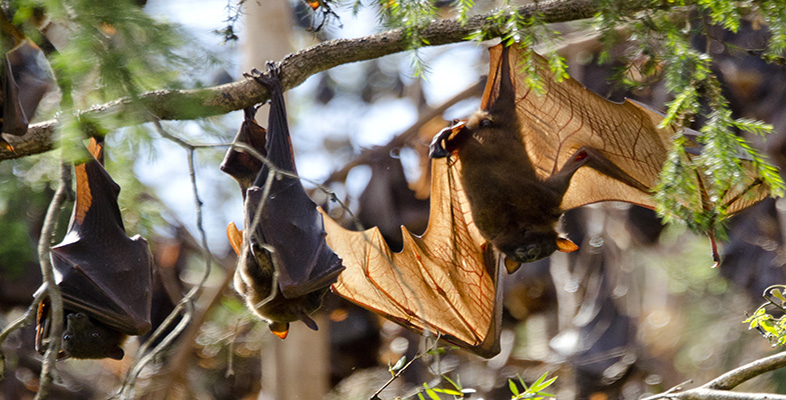3.4 Anteaters
Activity 4
View 'The Insect Hunters' on the DVD from 22.40-26.54, which shows the giant anteater, and make notes on what you see. On the basis of your notes, what features of the giant anteater could be regarded as adaptations for eating a diet composed of ants and termites? List each feature and state how the structure relates to its function (Figure 3 will be helpful to you). Your answer should be less than 100 words in total. (You will use your notes again in Activity 7.)

Discussion
The following features are adaptations for eating ants and termites.
Claws: Huge claws on the front feet are used to rip open termite hills and ant nests.
Jaws: The giant anteater has no teeth, even in adulthood; the jaws are fused and drawn out into a long tube supporting a long snout, which is inserted into holes dug out of termite mounds and ants' nests (Figure 3).
Tongue: The salivary glands are enlarged and secrete a sticky saliva that coats the long tongue, which is used to pick up ants and termites.
Comparison of the giant anteater with a similar-sized animal with no claws that cannot rip open termite mounds, e.g. a sheep, supports the view that anteaters' claws are an adaptation. But consider the following statement:
'The giant anteater had to evolve enlarged sharp claws so that it could rip open termite mounds.'
This statement implies that evolution occurs in a specified direction. However, evolution does not proceed with an aim or purpose, but primarily by means of natural selection. Statements implying a purpose for evolution are described as teleological. It is tempting to write about evolution in such a reassuringly 'commonsense' way and sometimes you'll come across statements of this type in LoM and the TV programmes. But on strict scientific grounds, it is not correct; it conveys an apparent belief that evolutionary change is forced in particular directions, perhaps by the 'needs of animals'. If, as a student of evolution, you use such language, others might conclude that you believe in 'directed evolution'. As you'll appreciate when we discuss in more detail how evolution is driven by natural selection operating on random variation, this concept is exactly contrary to how evolution comes about. So, the statement should be rewritten as:
'The giant anteater has large sharp claws on the front feet, used to rip open termite mounds.'
SAQ 5
Criticise and rewrite the following statement: 'The giant anteater evolved long tube-like jaws so that the snout could be inserted into holes dug into termite nests'.
Answer
The statement implies that evolution occurs with a purpose, and is teleological. It could be rewritten as: 'The giant anteater has long tube-like jaws supporting a long tubular snout that is inserted into holes dug into termite nests'.
